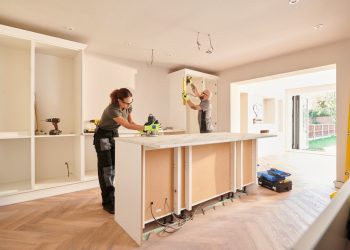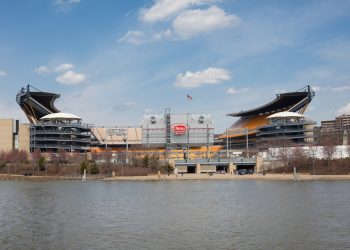The amount of equity-rich homes decreased slightly from 48.5% in Q3 to 48% in Q4 2022, but was still up from 41.9% last year, according to a new report from ATTOM.
ATTOM’s Home Equity & Underwater Report for Q4 2022 found that while the equity-rich levels nationwide remain nearly double what it was three years ago, the drop-off in the last three months of 2022 reversed a string of 10 straight quarterly gains. Also, the portion of equity-rich mortgage payers went down from Q3 to Q4 2022 in 31 states.
Despite the new pattern in equity-rich mortgages, however, the report also found that just 2.9% of mortgaged homes, or one in 34, were considered seriously underwater. That meant that they had a combined estimated balance of loans secured by the property of at least 25% more than the property’s estimated market value. The latest seriously underwater figure was unchanged from 2.9% in the prior quarter, and was still down from 3.1%, or one in 32 properties.
Key highlights:
- The biggest drops in equity-rich mortgages from Q3 to Q4 were all in the West, following earlier quarters that saw larger gains in that region than elsewhere in the country. The fourth-quarter declines were led by Idaho (from 65.8% to 61.6%), Arizona (from 63.4% to 59.9%), Nevada (from 55.8% to 52.3%), Washington (from 61% to 58.5%) and Oregon (from 55% to 53.2%).
- At the other end of the spectrum, the South had five of the top 10 states where the equity-rich share of mortgaged homes increased. The largest increases were in Montana (from 51.5% to 58%), Kansas (from 34% to 37%), Delaware (from 34.2% to 35.9%), Mississippi (from 31.5% to 33.2%) and Arkansas (from 36.6% to 38%).
- The largest increases in seriously underwater mortgages were clustered in the West. The top increases were in Missouri (from 5.2% to 7.1%), Hawaii (from 1.5% to 2%), Idaho (from 1.9% to 2.2%), New Mexico (from 2.7% to 3%) and Wyoming (from 2.9% to 3.2%).
- The percentage of seriously underwater mortgages decreased the most in Mississippi (from 9% to 6.8%), Delaware (from 3.9% to 3%), Montana (from 3% to 2.2%), Kansas (from 4.9% to 4.3%) and Arkansas (from 5.6% to 5.2%).
- Despite seeing some of the largest decreases in equity-rich percentages, the West still had the highest levels of such properties, with seven of the top 10 states. Those with the highest portions were Vermont (76.6 percent of mortgaged homes were equity-rich), Florida (62.2 percent), Idaho (61.6 percent), California (61.5 percent) and Utah (60.3 percent).
- Nine of the 10 states with the lowest percentages of equity-rich properties were in the Midwest and South. They were led by Louisiana (24.5%), Illinois (26.2%), Alaska (27.1%), West Virginia (30.1%) and Iowa (30.9%).
- Among the 107 metro areas of the study, the West and South again dominated the list of places with the highest portion of equity-rich properties. All but one of the top 25 were in those regions, led by San Jose, California (73.8%); Sarasota-Bradenton, Florida (70.5%); Fort Myers, Florida (67.8%); San Francisco, California (66.5%) and Los Angeles, California (66.3%). The leader in the Northeast region again was Portland, Maine (61.9%) while the top metro in the Midwest continued to be Grand Rapids, Michigan (50.5%).
- Eighteen of the 20 metro areas with the lowest percentages of equity-rich properties were in the Midwest and South. The smallest levels were in Baton Rouge, Louisiana (20.5%); Jackson, Mississippi (25.1%); Virginia Beach, Virginia (27.9%); Chicago, Illinois (28.3%) and Little Rock, Arkansas (28.8%).
- The portion of mortgaged homes considered equity rich went down in 70 of the 107 metro areas (65%).
- The Midwest and South again had the top 10 states with the highest shares of mortgages that were seriously underwater. The top five were Louisiana (10.6%), Missouri (7.1%); Mississippi (6.8%), Illinois (6.3%) and Iowa (6.2%).
- The smallest shares were in Vermont (0.9%), Rhode Island (1.1%), New Hampshire (1.2%), Florida (1.2%) and Massachusetts (1.3%).
- Among 107 metro areas, those with the largest shares of mortgages that were seriously underwater were Baton Rouge (11%); New Orleans, Louisiana (7.8%); Jackson (7.5%); Syracuse, New York (6.6%) and Scranton, Pennsylvania (6.3%).
- The portion of seriously underwater rates increased in 77% of the 107 metro areas. Seriously underwater rates, however, remained down, year over year, in 66% of the metro areas analyzed.
Major takeaway:
“Dents are beginning to surface in the armor around the U.S. housing market after 11 years of a strong showing for owners,” said Rob Barber, CEO for ATTOM. “Home values have been dropping since the middle of last year, which appears to be starting to cut into homeowner equity around the country. That’s probably happening because values are sinking faster than owners are paying off their mortgages. How that shakes out over the next few months will depend on a lot of factors, including where interest rates go. But for now, it looks like the runup in wealth flowing from owning homes has stalled along with the market.”
Overall, ATTOM found that 94.1% of homeowners paying off mortgages had at least some equity built up in their properties during the fourth quarter of last year. That also represented a slight decrease from 94.3% in the prior quarter, while still up from 93.5% a year earlier. The portion of homeowners with equity rises further when accounting for homeowners who have paid off their home loans.
Additionally, only about 234,400 homeowners were facing possible foreclosure, or just four-tenths of 1% of the 58.1 million outstanding mortgages. Of those facing foreclosure, about 216,000, or 92%, had at least some equity built up in their homes.
“Facing foreclosure is not nearly as impactful as it could be for the vast majority of homeowners because they have varying levels of financial cushion built up in their property,” Barber said. “That should help them either refinance mortgages, or if they have to sell, still generate a profit from all the recent price increases.”
States where the largest portion of homeowners facing possible foreclosure had equity in their properties included Utah (98%), Washington (97%), Idaho (97%), Colorado (96%) and Nevada (96%). States with the lowest percentages included Louisiana (82%), Illinois (85%), Maryland (87%), North Dakota (87%) and Virginia (88%).
For the full report, including additional data about equity and underwater mortgages throughout counties and zip codes, click here.












